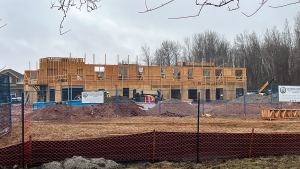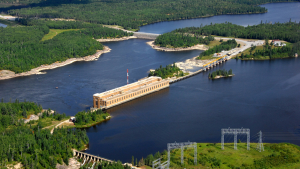It’s no secret construction’s labour force is already strained, but a new report from BuildForce Canada is shedding light on some major demands that are going to be placed on the industry as Canada attempts to move towards greener practices.
A key takeaway of the report, Building a Greener Future: Estimating the impact on construction labour demands from transitioning buildings in Canada away from fossil fuels, is that heating and refrigeration and air conditioning mechanics need to see some very significant growth to enable the industry to meet green targets, very close to 400 per cent.
“That really does require a very extensive effort on the part of the industry to try and increase the number of individuals going into that trade,” said Bill Ferreira, executive director of BuildForce Canada.
“The other issue we wanted to identify is gas fitters. They will be impacted by a transition away from fossil fuel driven space heating sources to electric. We can’t afford to lose anyone from this industry at this time. We need to find ways to transition those individuals so they can remain part of the construction industry.”
Overall, the report examines labour market implications as it pertains to energy efficiency improvements and carbon footprint reductions in order to support the federal government’s goals to achieve net-zero greenhouse gas emissions by 2050.
“What we really wanted to do is provide the industry a sense of what the pressures from the various different government policy initiatives would be on the demand side over and above our business-as-usual scenario that we have built into our traditional LMI (labour market information) forecast,” Ferreira explained.
Just how many workers may be needed?
The report found retrofitting Canada’s building stock to incorporate sustainable fuel sources, technologies and materials could require as many as 57,000 additional construction workers and generate more than $81 billion in new construction investments by 2032.
The level of effort required to transition Canada’s stock of commercial and institutional buildings could not be completely assessed for this iteration of the report, Ferreira said.
BuildForce estimates the change will create significant demands for non-residential workers as a significant portion of the space and water heating units installed in these buildings is currently powered by fossil fuels.
“What we found on the commercial side is that there really is a lot of poor information out there to enable us to really do effective modelling at this point,” he said.
The report models a scenario in which two types of green-building activities are performed: converting space and water heating equipment from fossil fuels to electric power sources and retrofitting buildings to improve energy efficiency and minimize heat loss.
Commercial requires more custom work
According to the report, as many as 16,300 new jobs relating to fuel switching could be created in the residential sector alone and a further 40,600 may be created to perform energy-efficiency retrofits.
“There is, on the commercial side, a lot more custom work required,” Ferreira said. “Residential is a little bit simpler. When you look at fuel switching as an example, you are moving into an existing home that is powered by fossil fuel sources for space heating and some sort of fossil fuel-driven hot water heating system. We looked at what the requirements would be on a workforce to be able to achieve some transition to electrification both for space heating and hot water heating.”
For space heating, the report focused primarily on heat pumps as it seems to be the direction the industry is moving in.
On hot water heating, the report didn’t specifically take a position as to what the technology would be but what the implications would be, what are the trade implications and what kind of pressure does that place on the existing workforce, keeping in mind retirements and the general supply of individuals in those specific trades, Ferreira explained.
Provincial highlights
The report also models the implications of the green-building transition across the provinces and found the impacts of fuel-switching could be lower in Quebec and the Atlantic provinces because a large proportion of homes are already equipped with electric-powered heating equipment.
“However, many homes in the Atlantic provinces may require extensive retrofits to bolster energy efficiency,” a release states. “In Ontario and the Prairie provinces, a high percentage of homes rely on space and water heaters that are powered by fossil fuels such as natural gas, heating oil, coal and propane. Demand for skilled workers to perform fuel switching will therefore be high in many of these provinces.”
Follow the author on X/Twitter @DCN_Angela.











Recent Comments
comments for this post are closed